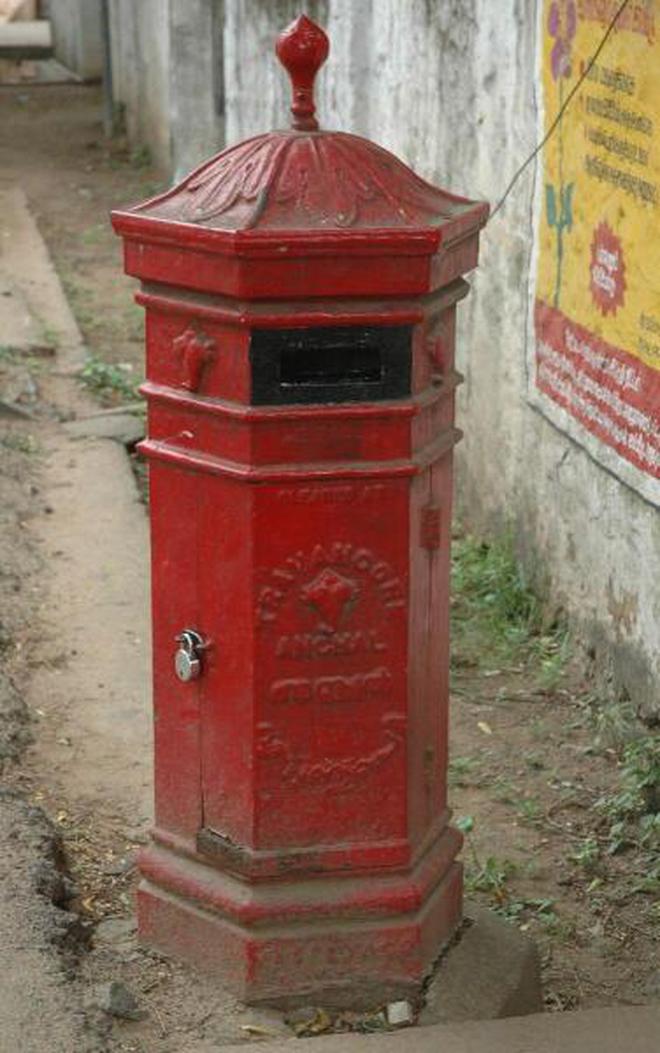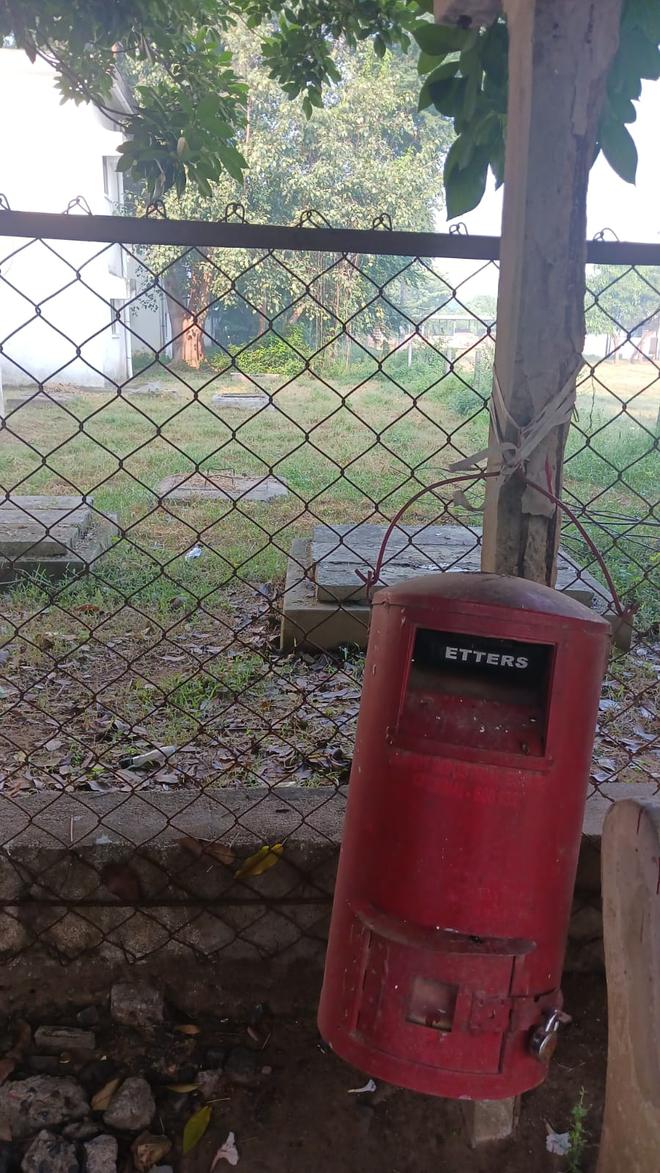The imperturbable faces of the crooked red letter boxes planted all over Chennai are like epithets the city has forgotten to use. The ones that remain, project the presence of an era that broods in its absences.
For a generation that has forgotten, or never learnt the joys of sending and receiving packages by post, a letter box is often confused with the post box. The post box is what people hang outside their doors or gates. Whereas, letter boxes are big, red and planted on the street or prominent junctions, and run by the post office.

S Narayanan, a tax consultant and a resident of Nungambakkam remembers, “There was a time when many houses or offices did not have addresses. Instead, in official papers, they would mention the P.O box for correspondence which was unique only to the addressee. This was located on the premises of the Post Office itself.”
Narayanan’s dalliance with the post does not end there. He adds, with a glint in his eye, “While growing up I would immerse myself in spy thrillers and detective stories. I remember dead drops or dead letter boxes that were used for tradecraft. Spies would use them clandestinely to transfer items between networks. I read it in John Le Carre’s Tinker Tailor Soldier Spy. But now, that paints a very romantic picture. With radio-based and satellite communication, dead drops have become a thing of the past.”
In one of the deep pockets of Mylapore, advocate V Geetha Rani has a more utilitarian approach. She says, “I have had a post box attached to my house for more than 10 years now. Earlier we used to write letters to friends and family living away, but now I receive important court orders and case related paperwork through the post.”
The biscuit colour post box attached to Geetha’s home, she says, is the only registered postal address with the court and is crucial for all work related correspondences.
Monojit Kumar, former Director General of Postal Services, India, says, “I live in a one storeyed building. We have a room on the ground floor which is lined with post boxes for each flat , and they have been in a state of disrepair. “
He adds, “When one of the members of our board asked me what to do about them – I, being a former post office man, am never going to get rid of them. I think the issue is with the way people communicate. Back in the day, our parents used to write to every relative because trunk calls were expensive. We used to fill the inland letter card, write through the margins and it would have the entire year’s news.”

Talking about the history of the letter box, the postal officer says that letter boxes were first introduced in Europe. “In the 1700s, a man went around town with a bell and whoever had a letter to post would hand it to him, or they would go to the post office. In those days there was no concept of postage stamps. The person receiving the letter had to pay for it.”, says Monojit. Later the authorities decided on an improvement — a couple of boxes were put around the town and a man from the post office would come to clear the letters and send it .

Anthony Trollope, English novelist and Post Office Surveyor to London’s eastern district, who designed the letterbox, went through several iterations in order to make it practical and economical. Monojit says that earlier letter boxes were made of cast iron and were very heavy. “I know because I found one in West Bengal’s Bardhaman RMS (Railway Mail Service). The superintendent proudly told me that he was the inspector there post Independence, and he had kept it aside. It lay there from 1950 to 1980, and I decided to bring it to Kolkata’s Museum and GPO. It was so heavy that even with 10 people, it was difficult to transport,” shared the officer.
In recent times however, Monojit’s post box is frequented only by letters from financial instituitions, banks or Aadhar related documents that get delivered by mail.
“Letter boxes are an anachronism from the past like cannons outside military establishments. The cannon is never going to be used, but it is a part of our history.” He adds, “Why should I give it to a kabadiwala to melt down, when my letter box is living history?“







